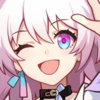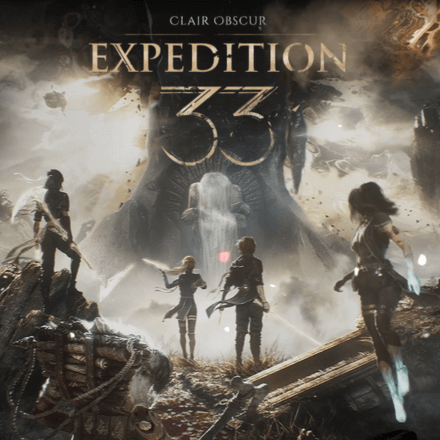How to Make a Debug Room
In RPG MAKER WITH, you can create a debug room to test your Events, enemy battles, etc. Read on to learn more about making a Debug Room and what parts might be in it.

In RPG MAKER WITH, you can create a Debug Room to test your Events, enemy battles, etc. Read on to learn more about making a debug room and what parts might be in it.
List of Contents
How to Make a Debug Room
Create a Debug Room Ahead of Time

Creating a debug room early on helps you organize and refine your game mechanics. During game development, it's easy to get caught up in creating maps, Events, and other parts of your game, which makes keeping track of these Events and organizing them more challenging as your game expands.
For example, if you've already created much of your game without a centralized place to test mechanics, managing its Events becomes cumbersome and time-consuming. Creating the debug room ahead of time allows you to streamline the process of testing and optimization without spending too much time and effort.
What is a Debug Room?

A debug room is a map that allows you to test mechanics such as Events, battles, or shop vendors, without needing to play through the entire game - saving you time and effort. The room only needs a simple design, where you can quickly identify and address any issues or make necessary changes to improve the game.
Ultimately, having a dedicated debug room streamlines your bug-testing process and enhances the overall quality of your game.
Parts of a Debug Room
| Parts of a Debug Room |
|---|
|
|
Open Door Using a Switch

One of the game mechanics a typical RPG game has is opening a door using a switch. There are different ways to create this Event, such as its appearance or conditions to trigger it. If you encounter an issue with this Event while playtesting the game, you can easily solve it in your debug room. A debug room allows you to modify it without having to look for this Event in your game map.
Make Chest Appear Using a Switch

Another use for a switch is to trigger a treasure chest to appear. You might create these Events to provide a challenge for players. Also, you might want to test different objects and add animation to this Event. Adding this in your debug room allows you to change and even improve this Event.
You may want to use a switch in your game to trigger a treasure chest to appear as a small puzzle of sorts. You may also want to have the treasure chest show various Animations or use different kinds of objects as your treasure chests. Placing this feature in a debug room allows you to modify and refine the Event, ensuring it enhances the player's experience.
Healing Point

In most RPG games, there are locations where the party can fully recover their HP and MP. Though this is a simple Event, you might want to add changes to it. Putting this Event in your debug room allows you to change and test it, especially if it's a Common Event.
Quest-giver NPC

Quests are also a staple part of RPG games, and they're given out by special quest-giver NPCs. Having all your quest-giver NPCs in one room allows for easy testing of quest lines, especially one with branching quest lines.
Item-giver NPC

Some NPCs will give items in RPG games. Though setting the Events for them is quite simple, you might think of adding conditions or other related events before they give an item. For example, the NPC will only give you this item if you defeated a certain amount of enemies. A debug room can help you modify and test this Event, especially if you have all those NPCs in your room.
Boss Battle

RPG games also include epic boss battles, which provide challenges and rewards to players. Since bosses are designed to be more difficult than typical enemies, you might want to add these bosses to your debugging room. This allows you to fight them and balance their difficulty without visiting their dungeons.
Monster Encounters

Here, we added random and on-map enemy monster encounters. Depending on your choice of enemy encounter, you can change how they move or behave in the debugging room. You can also balance their difficulty. Instead of locating these enemies on your map, you can fight and modify them in your debugging room.
How to Make Different Kinds of Monster Encounters
Save Point

Though you can add a save option in the game menu, you might want players to save their game via object interaction. Here, we have a yellow orb where players can save their game. If you're having trouble setting up this Event or have created multiple save points throughout your game, keeping a copy in a debugging room can be incredibly useful. This way, you can easily modify the event commands and efficiently update all save points in your game, ensuring a smoother gameplay experience.
Debug Room Tip
Make Room for Expansion

As you create your game, you might have added new features and mechanics that do not fit with your current debug room size. For example, the debug room described in this guide lacks space for dungeon traps or a stat adjustment NPC. By making room for expansion and increasing the map size with minimal edits—such as extending this hallway—you can easily incorporate these elements.
Leaving a space for expansion and adjusting the debug room's map size can help you accommodate future game mechanics.
RPG MAKER WITH Related Guides

| Core Guides | |
|---|---|
| Beginner's Guide Part 1 | Beginner's Guide Part 2 |
| Tips and Tricks | |
|---|---|
| Map, Event, and Switch Naming Tips | How to Use the Flood Fill Tool |

| Core Guides | |
|---|---|
| Intermediate Guide Part 1 | Intermediate Guide Part 2 |
| Tips and Tricks | |
|---|---|
| How to Make a Switch | How to Use Map Foregrounds and Backgrounds |
| How to Change Event Text Color | |

| Core Guides | |
|---|---|
| Advanced Guide Part 1 | Advanced Guide Part 2 |
| Tips and Tricks | |
|---|---|
| How to Switch Battle Views | How to Make a Debug Room |
| How to Make Your Characters Jump | Kinds of Games You Can Make With RPG MAKER WITH |
| Game Design Fundamentals | What to Do When You Can’t Make a Good Game |

Comment
Author
How to Make a Debug Room
Rankings
- We could not find the message board you were looking for.
Gaming News
Popular Games

Genshin Impact Walkthrough & Guides Wiki

Umamusume: Pretty Derby Walkthrough & Guides Wiki

Where Winds Meet Walkthrough & Guides Wiki

Pokemon Legends: Z-A Walkthrough & Guides Wiki

Honkai: Star Rail Walkthrough & Guides Wiki

Wuthering Waves Walkthrough & Guides Wiki

Digimon Story: Time Stranger Walkthrough & Guides Wiki

Clair Obscur: Expedition 33 Walkthrough & Guides Wiki

Pokemon TCG Pocket (PTCGP) Strategies & Guides Wiki

Zenless Zone Zero Walkthrough & Guides Wiki
Recommended Games

Fire Emblem Heroes (FEH) Walkthrough & Guides Wiki

Yu-Gi-Oh! Master Duel Walkthrough & Guides Wiki

Diablo 4: Vessel of Hatred Walkthrough & Guides Wiki

Elden Ring Shadow of the Erdtree Walkthrough & Guides Wiki

Super Smash Bros. Ultimate Walkthrough & Guides Wiki

Monster Hunter World Walkthrough & Guides Wiki

Pokemon Brilliant Diamond and Shining Pearl (BDSP) Walkthrough & Guides Wiki

The Legend of Zelda: Tears of the Kingdom Walkthrough & Guides Wiki

Persona 3 Reload Walkthrough & Guides Wiki

Cyberpunk 2077: Ultimate Edition Walkthrough & Guides Wiki
All rights reserved
©Gotcha Gotcha Games
The copyrights of videos of games used in our content and other intellectual property rights belong to the provider of the game.
The contents we provide on this site were created personally by members of the Game8 editorial department.
We refuse the right to reuse or repost content taken without our permission such as data or images to other sites.



























